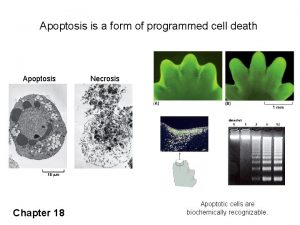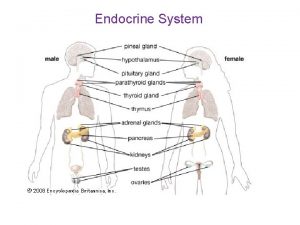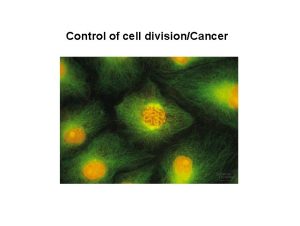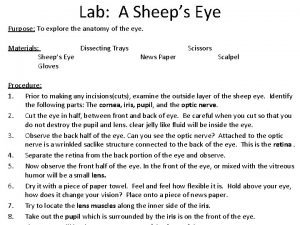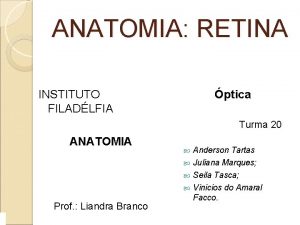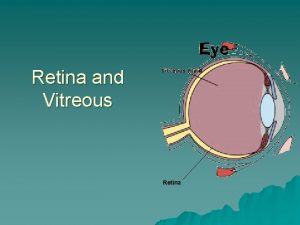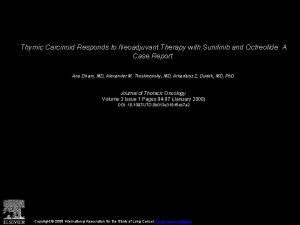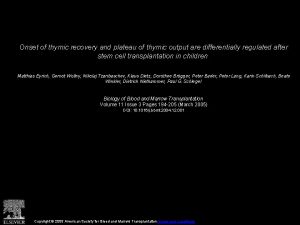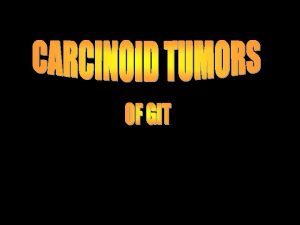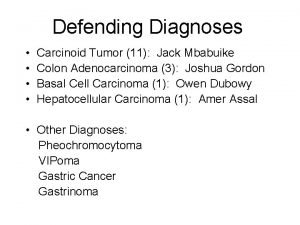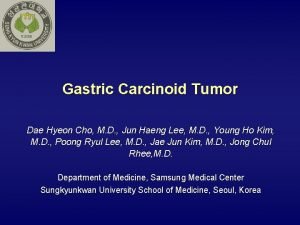Rare Thymic Carcinoid Tumor Metastasis to the Retina













- Slides: 13

Rare Thymic Carcinoid Tumor Metastasis to the Retina Mimicking a Traumatic Retinal Hemorrhage Rohit Dewan, DO and Gerritt Lagemann, MD University of Pittsburgh Medical Center Abstract #1396

No Disclosures

Purpose • Neuroendocrine tumor metastasis is a rare cause of retinal mass. • Imaging features are nonspecific and make diagnosis by imaging difficult. • We present a case of a retinal neuroendocrine tumor metastasis from a thymic carcinoid tumor mimicking a traumatic retinal hemorrhage.

Case Report • A 71 -year-old male presented to the emergency department after accidental trauma to the right forehead from a crowbar. • Despite imaging findings suggesting a traumatic retinal hemorrhage, the patient had no visual symptoms. • Direct ophthalmologic exam showed instead a vascular but nonhemorrhagic mass. • Further workup revealed widely-metastatic thymic carcinoid. The lesion represented a neuroendocrine metastasis.

Imaging Findings • Initial noncontrast head CT showed some right facial swelling (short arrow) and a discrete, lentiform, dense, 9 x 5 mm collection (long arrow) along the right posterior retina.

Imaging Findings • MR showed a homogenous, intrinsically T 1 -hyperintense, T 2 hyperintense mass with no definite enhancement. • The collection was initially presumed to represent a traumatic retinal hemorrhage. • Clinically, however, the patient had no visual symptoms. T 1 Precontrast T 1 Postcontrast FLAIR

Imaging Findings • F 18 -FDG PET CT showed the mass to be FDG avid.

Imaging Findings • Ophthalmologic ultrasound showed a dome-shaped, hyperechoic retinal mass.

Imaging Findings • Direct ophthalmologic visualization showed a well-demarcated, nonhemorrhagic, amelanotic mass.

Summary • A careful patient history revealed a remote history of thymic neuroendocrine tumor resected several years prior to current presentation. • Further workup revealed widely metastatic disease including this orbital metastatic lesion.

Summary • Vascular tumors, including metastatic neuroendocrine tumors, should be included as a possible diagnosis when encountering a retinal mass, even in the setting of trauma. • Comprising only about 0. 5% of all malignancies, carcinoid tumor is an uncommon neoplasm arising from enterochromafin cells within the gastrointestinal tract and bronchial tree.

Summary • There are currently only a handful of reports regarding orbital metastasis within the radiology and ophthalmology literature. • However, as treatment options improve and survival increases, new metastatic patterns have emerged, and orbital metastases can be expected to become more common.

References Gupta A, Chazen JL, Phillips CD. Carcinoid tumor metastases to the extraocular muscles: MR Imaging and CT findings and review of the literature. American Journal of Neuroradiology, August 2011; 32: 12081211. Isidori AM, Kaltsas G, Frajese V, Kola B, Whitelocke R, Plowman PN, Britton KE, Monson JP, Grossman AB, Besser GM. Ocular metastases secondary to carcinoid tumors: The utility of imaging with MIBG and DTPA Pentetreotide. J Clin Endocrinol Metab, April 2002, 87 (4): 1627 -1633.



